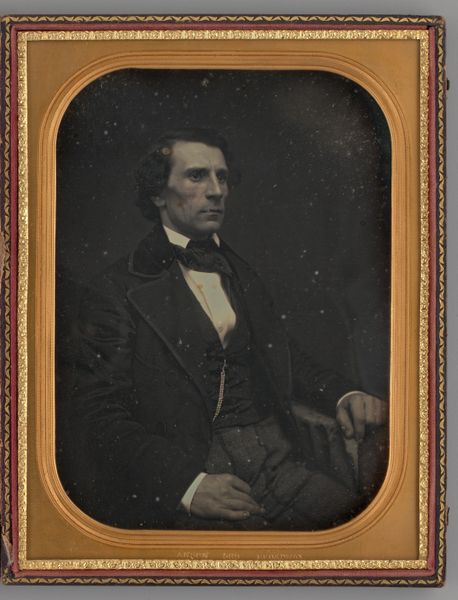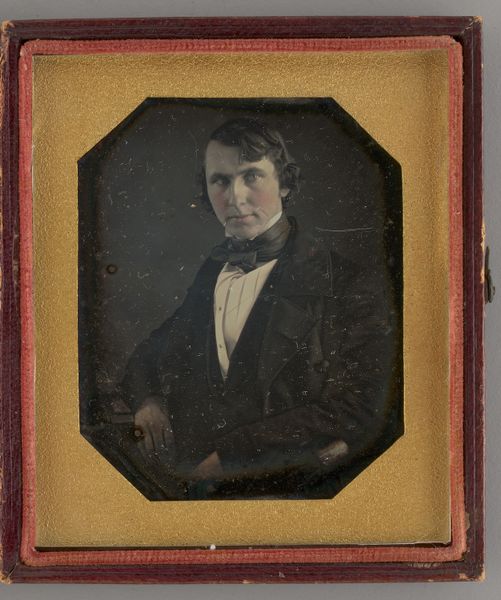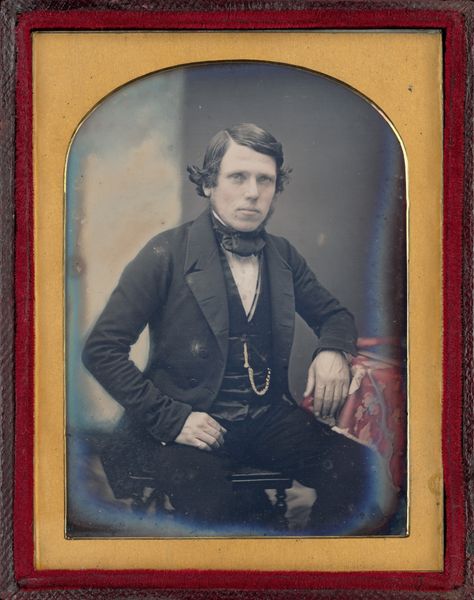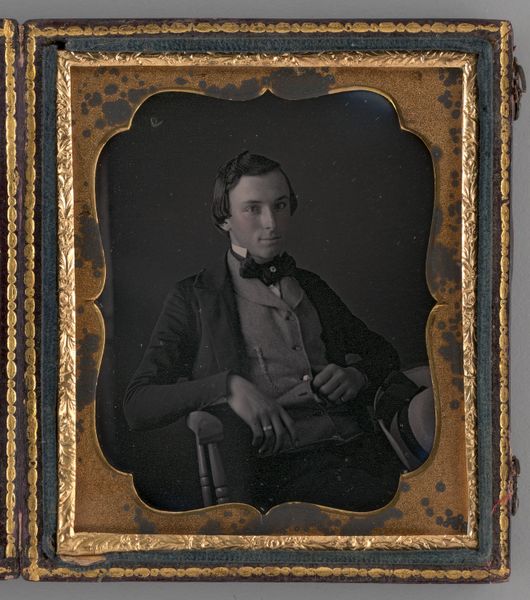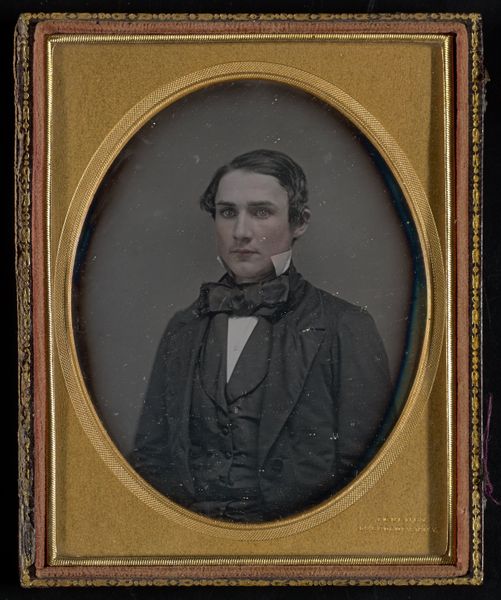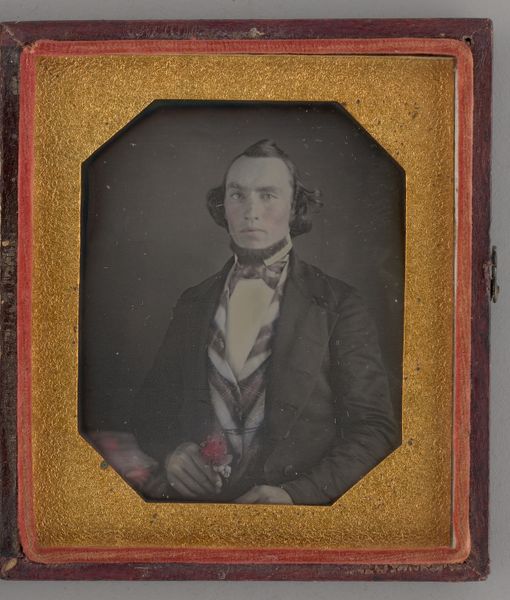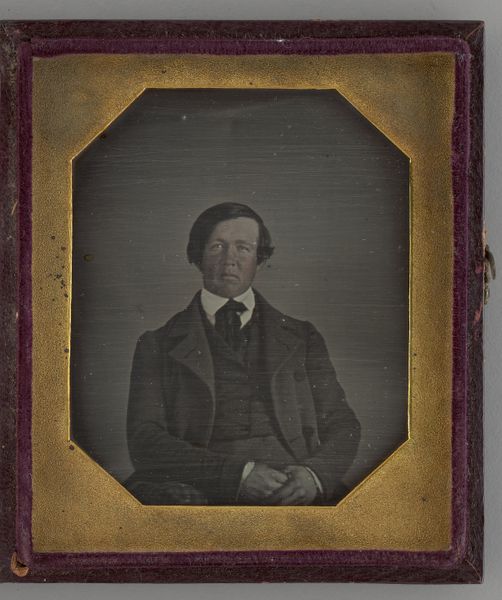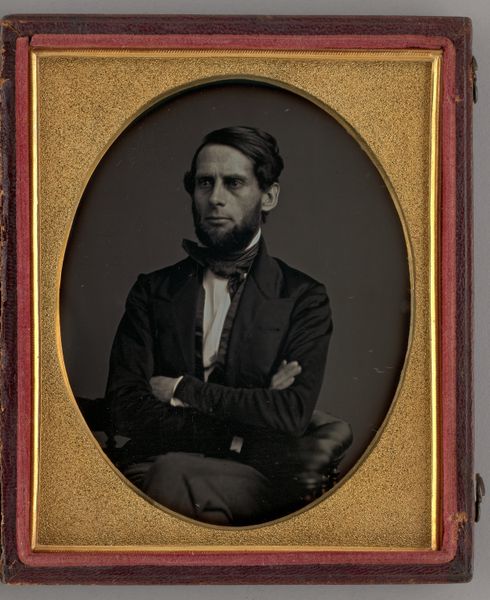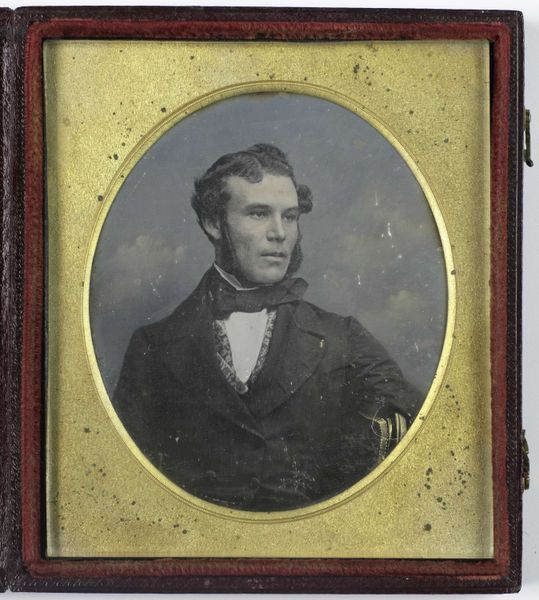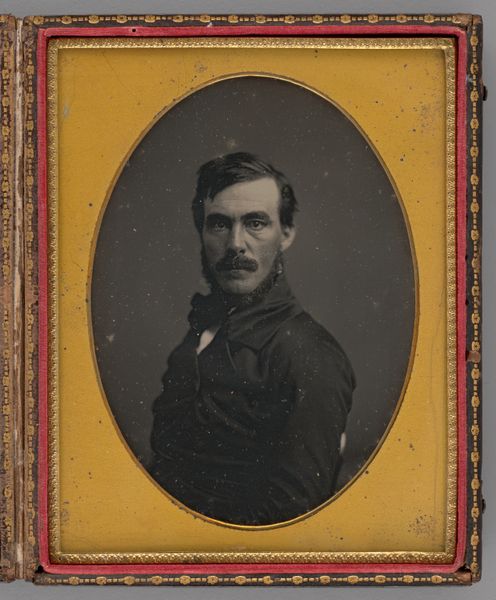
daguerreotype, photography
#
portrait
#
16_19th-century
#
daguerreotype
#
photography
#
romanticism
Dimensions: 8.2 × 7 cm (3 1/4 × 2 3/4 in., plate); 9.3 × 16.2 × 1 cm (open case); 9.3 × 8.1 × 1.5 cm (case)
Copyright: Public Domain
This portrait of a seated man is an early photographic image, a daguerreotype, created anonymously. Though modest in size, this portrait speaks volumes about the rise of photography as a social and cultural force in the 19th century. Daguerreotypes, like this one, emerged in the 1840s, offering a relatively affordable and accessible way for individuals to capture their likeness. Prior to this, portraiture was largely the domain of the wealthy, but now, a wider segment of society could participate. Consider the sitter's clothing and pose. These are calculated presentations of the self, shaped by the conventions of bourgeois portraiture. The rise of photography coincided with the growth of a middle class eager to assert its status and respectability, and institutions such as photographic studios played a key role in shaping and reinforcing these social norms. To fully understand images like this, historians might consult studio records, conduct social histories of photography, and study the visual culture of the time. The meaning of art is contingent on its social and institutional context.
Comments
No comments
Be the first to comment and join the conversation on the ultimate creative platform.
